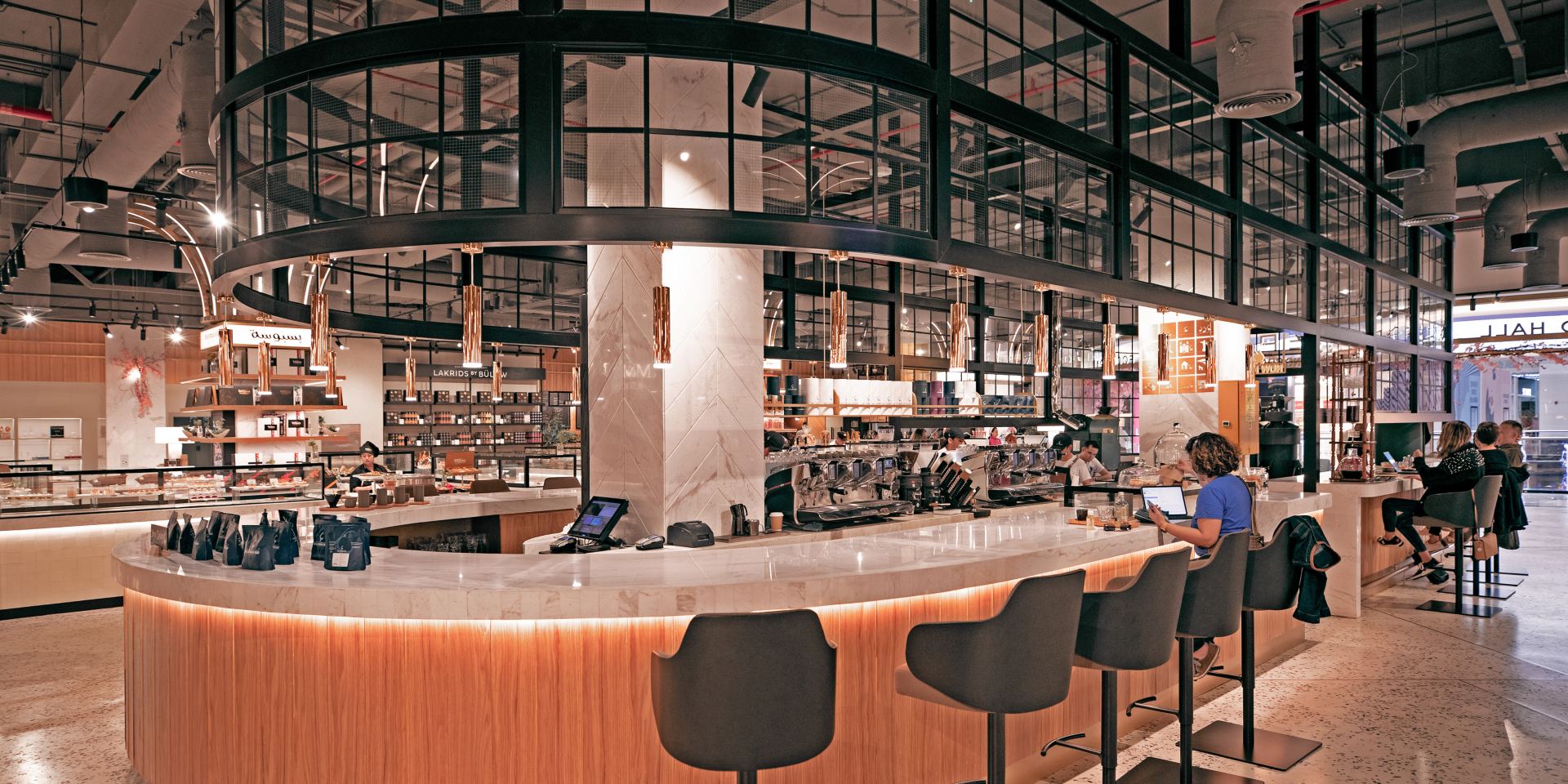The popularity of food halls in recent years has transformed the F&B landscape, offering a dynamic and communal approach to dining—simultaneously inspired by traditional food halls and markets while also offering something distinctly modern.
We delve into the top 8 factors that should be at the forefront of any developer's mind when creating a food hall.
1. Casual and Approachable Dining Experiences
Modern food halls offer a distinctively casual and approachable environment, providing diners with a relaxed setting that can be hard to achieve with standalone restaurant venues.
This is partly due to the strategic use of open spaces and varied seating, giving people the freedom to move around and select from a range of places to eat and drink. And part of the charm of food halls is their ability to cater to a variety of occasions, from family meals to post-work gatherings.
Developers building or commissioning a food hall concept must prioritise ways to create this atmosphere, encouraging socialising while maintaining the high standards of culinary offerings.
2. Build Your Concept Around People
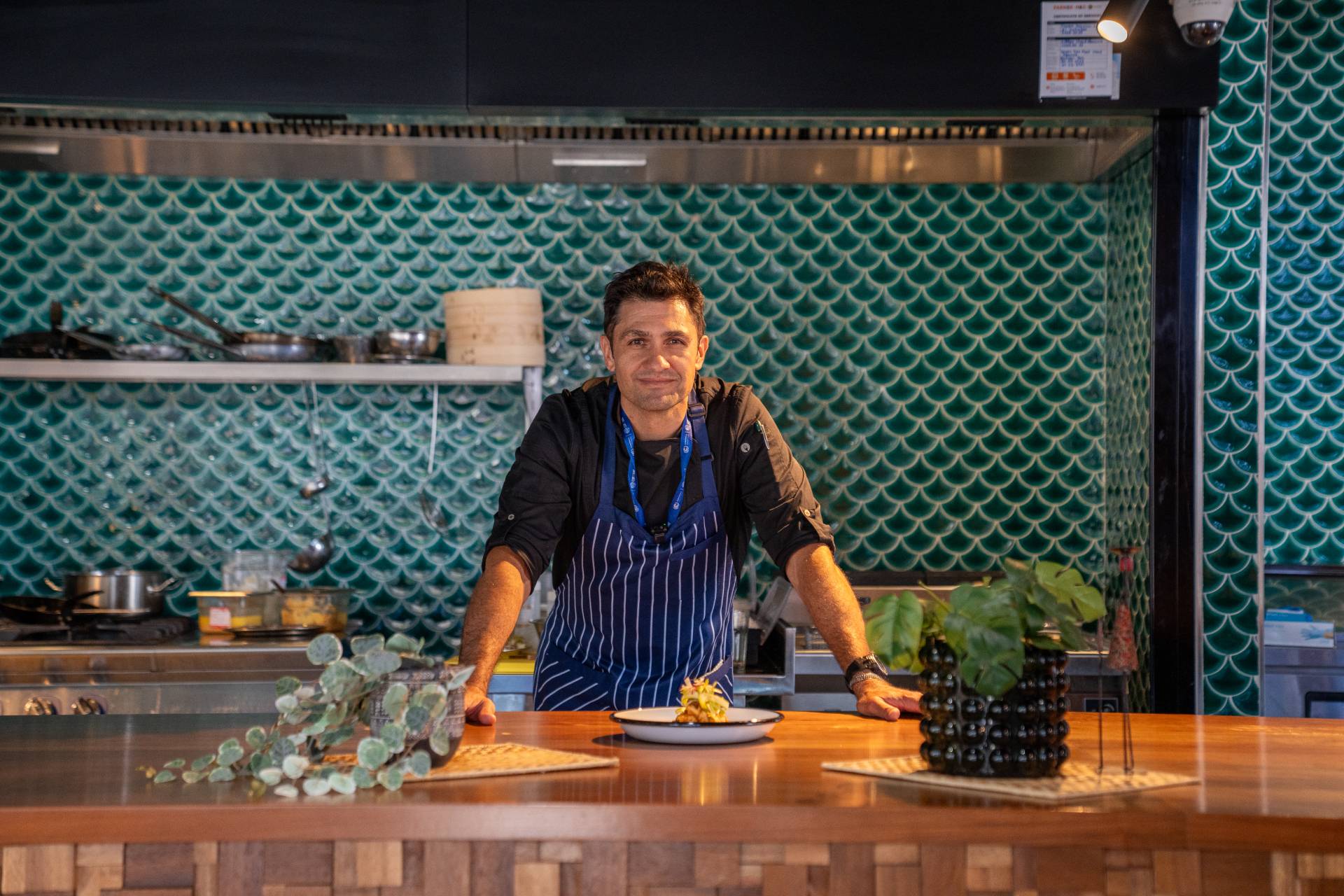
Food halls thrive on diversity, featuring a mix of established vendors, up-and-coming artisans, and guest chefs from around the world.
Developers should look at ways to curate a line-up that reflects the unique flavours and talents within the community, as well as consider how to bring in talent and expertise from around the world. Working with passionate professionals in the world of F&B is essential for making this a reality.
When we collaborated with renowned chef, Alexander Smalls, on the development of Alkebulan, the world’s first African food hall, this partnership allowed us to bring authenticity and personality into the concept by drawing from real world experience and connections.
3. Experience-Driven Dining
In an era where consumers prioritize interactive and social experiences, food halls are increasingly important as a place where people spend time and seek entertainment.
Beyond the meal itself, diners can enjoy having direct access to the range of foods and offerings on show, with meal preparation stations often located adjacent to seating areas.
Activities such as food tasting, cooking competitions, and talks from people in the world of F&B are also incredibly powerful drivers of footfall, catering to people’s desire for rewarding and unique food experiences.
4. Adaptability
The modular nature of food halls provides a unique advantage: easy adaptation to changing culinary trends. While each food hall’s configuration might be different, the best venues will offer facilities that accommodate to changes in vendors.
Unlike standalone restaurants that may struggle to rebrand, food halls are made up of several parts that can evolve and adapt with time. New concepts can be brought in to specific opportunities in market while multiple vendors can collaborate too—offering new areas for innovation.
5. Flexible and Inclusive Design
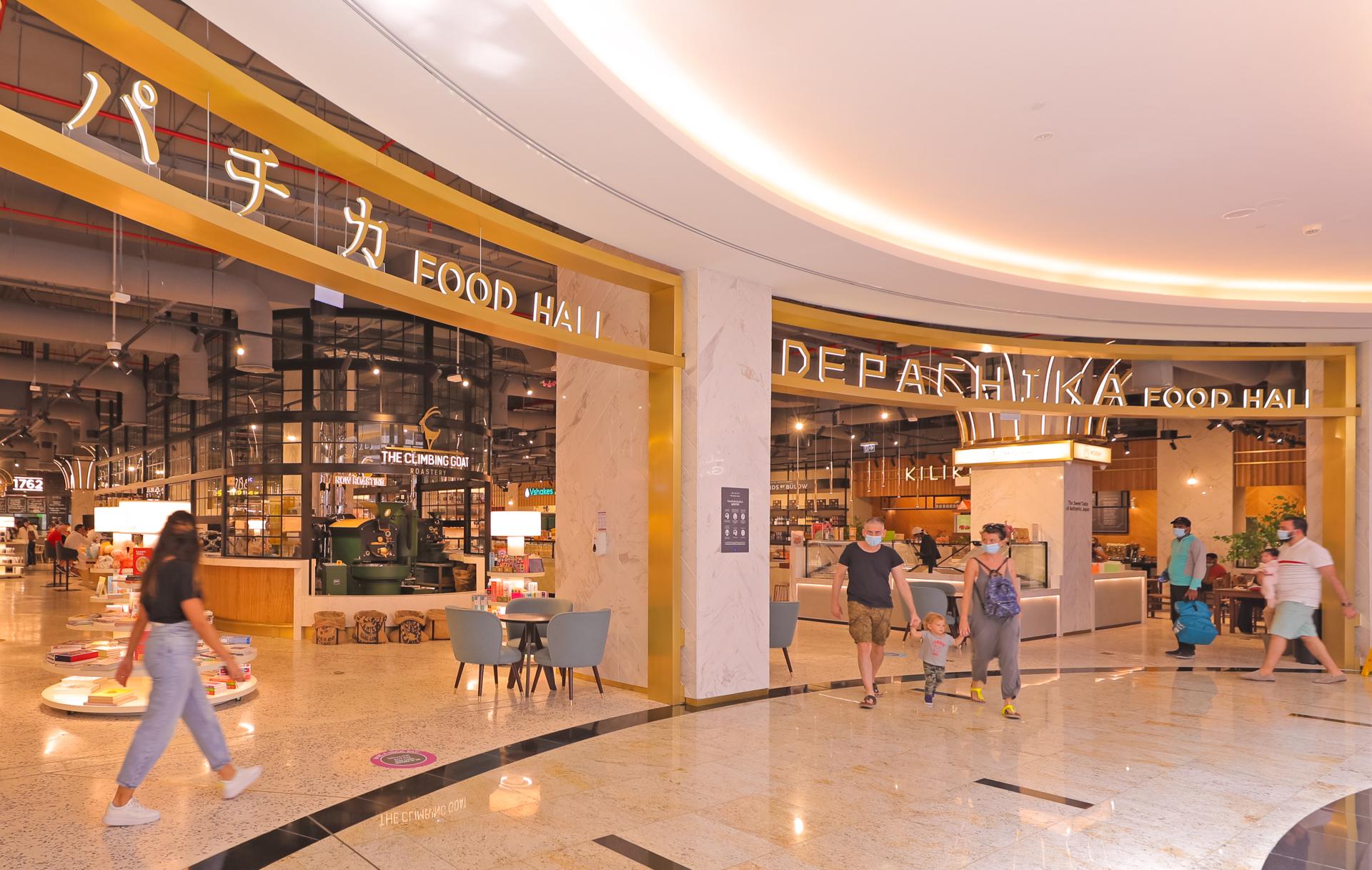
A food hall's design should prioritise flexibility and inclusivity for all people. Modular spaces that can be easily reconfigured allow for the accommodation of new vendors and changing trends, as well as ensuring accessibility for diners of all abilities.
This philosophy also translates to other areas of food hall design, such as catering to dietary needs or food preferences; varying budgets; making sure the space has adequate quiet areas; as well as a providing good variety of seating options to accommodate both small and large groups.
6. Balancing Upscale and Casual Elements
Food halls have existed for centuries in one form or another. However, the modern-day food hall is very different to the kind of “food court” you would have found in a shopping centre 10 years ago, which would have featured mostly fast-food brands.
Instead, a successful food hall needs to find the right balance between upscale and casual elements. While an upscale ambiance can attract a more discerning clientele, maintaining an approachable atmosphere ensures inclusivity.
As such, it’s important to carefully consider seating arrangements, interior design, and overall ambiance to strike the perfect balance that caters to a diverse range of patrons.
Learn How We Developed an Upscale Food Hall for KSA The Kingdom Centre
7. Sustainability and Conscious Consumerism
In the era of conscious consumerism, integrating sustainability practices into the food hall's operations is not only responsible but also appealing to a growing segment of patrons.
As well as consider eco-friendly packaging, waste reduction initiatives, and partnerships with vendors who prioritize sustainable and locally sourced ingredients, it’s even possible to emphasise sustainable design in the very construction of the food hall itself.
8. Thorough Market Research
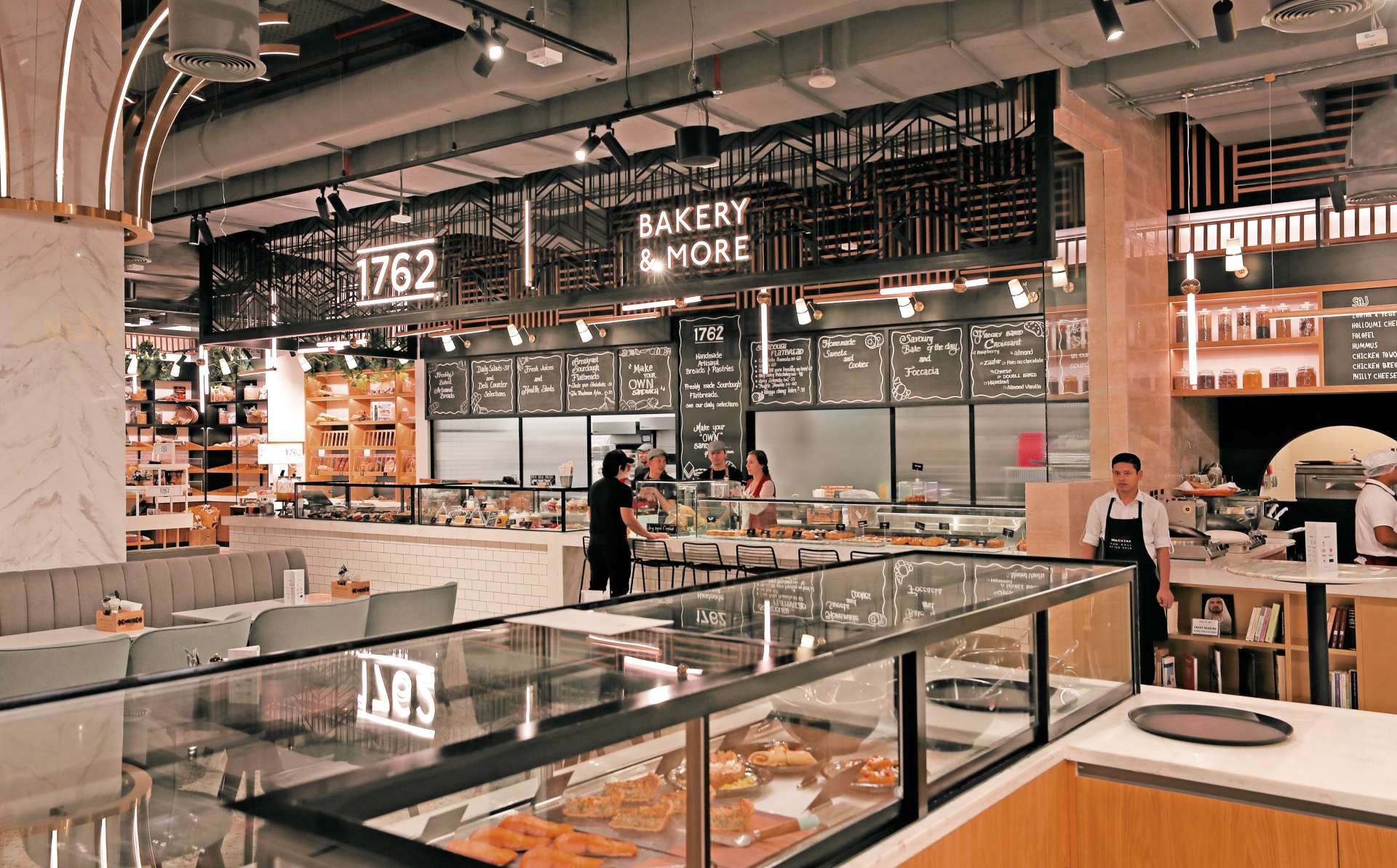
Understanding local demographics, culinary preferences, and existing competition is crucial for creating a food hall that meets the needs and desires of the community.
A thorough understanding of your market and who you are trying to attract will allows food halls to have relevance and purpose. Preferences among older diners can differ significantly to younger generations, and F&B trends can differ considerably region to region.
9. Community Engagement
Fostering a sense of ownership and pride within the community is the secret ingredient that contributes to the long-term success of the world’s best food halls.
Finding ways to encourage people to come back more than once involves more than just entering the market with a bang. Being a central part of the community requires proactivity and several activities such as seeking input from residents on food offerings, hosting events, and incorporating community-driven elements into the food hall’s entertainment schedule.
10. DESIGNING A Food Hall Concept
Building a well-loved and recognised brand for a food hall involves several elements, including crafting a unique and compelling identity from real life experiences, as well as tying the journey together with strategic design.
This process entails not only offering exceptional culinary experiences but also curating a distinct ambiance, visual aesthetics, and values that resonate with your target demographic.
It is only through combining these elements that you can create a memorable and authentic narrative that not only distinguishes your establishment in a crowded market but also forges a lasting connection with diners who will keep coming back.
Speak to Us About Your Next Food Hall Project
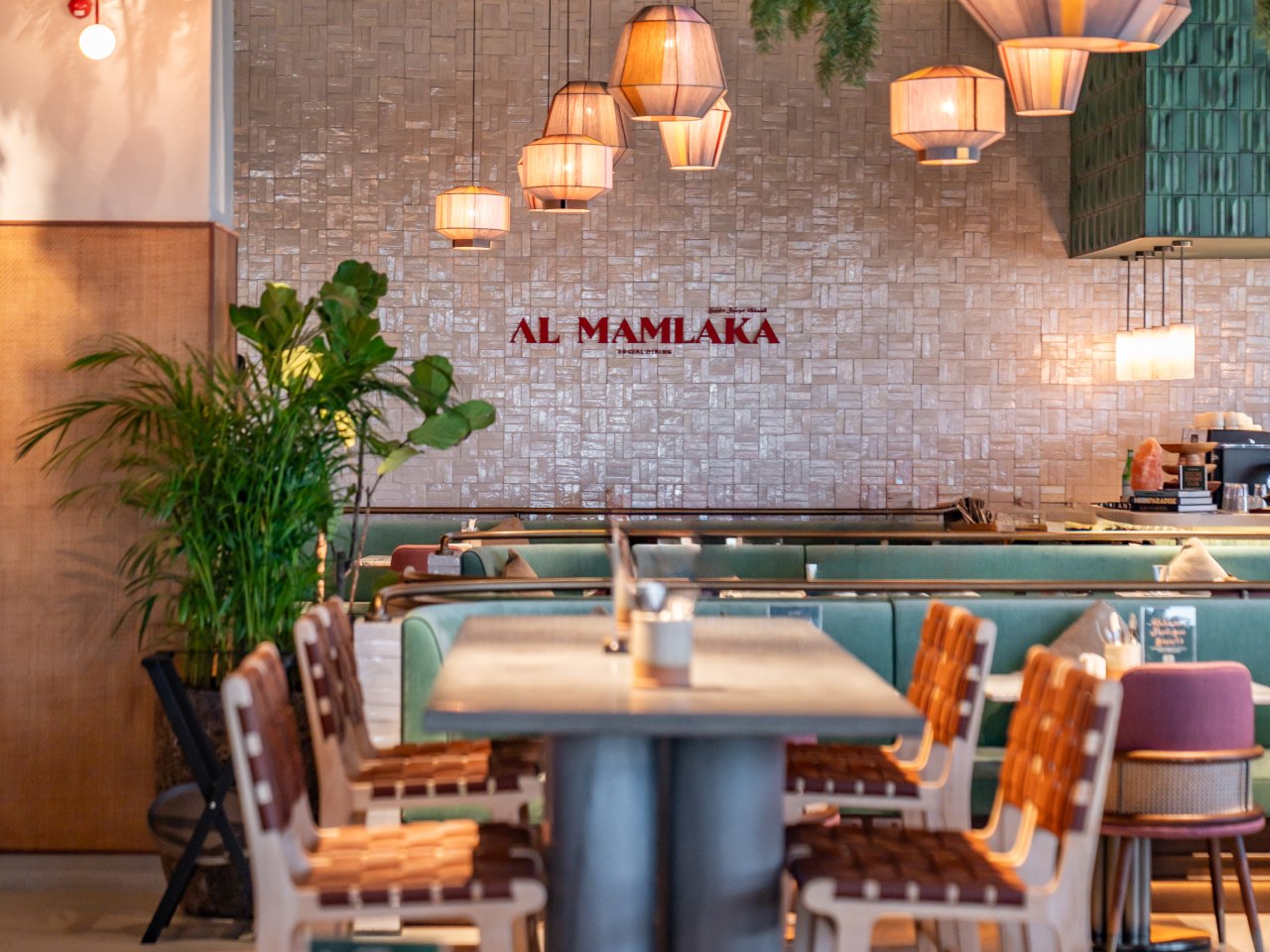
From understanding the local market to creating a diverse and dynamic culinary line-up, we know more than any team how each element plays a crucial role in shaping the identity of a food hall.
By prioritising factors such as inclusive design, community engagement, and interactive experiences, we work with our clients to create culinary destinations that not only meets the diverse preferences of modern consumers but also contributes to the vibrancy of the community you're trying to build.
-1.png?width=3330&height=698&name=TGP%20International%20Logo%20White%20(1)-1.png)
